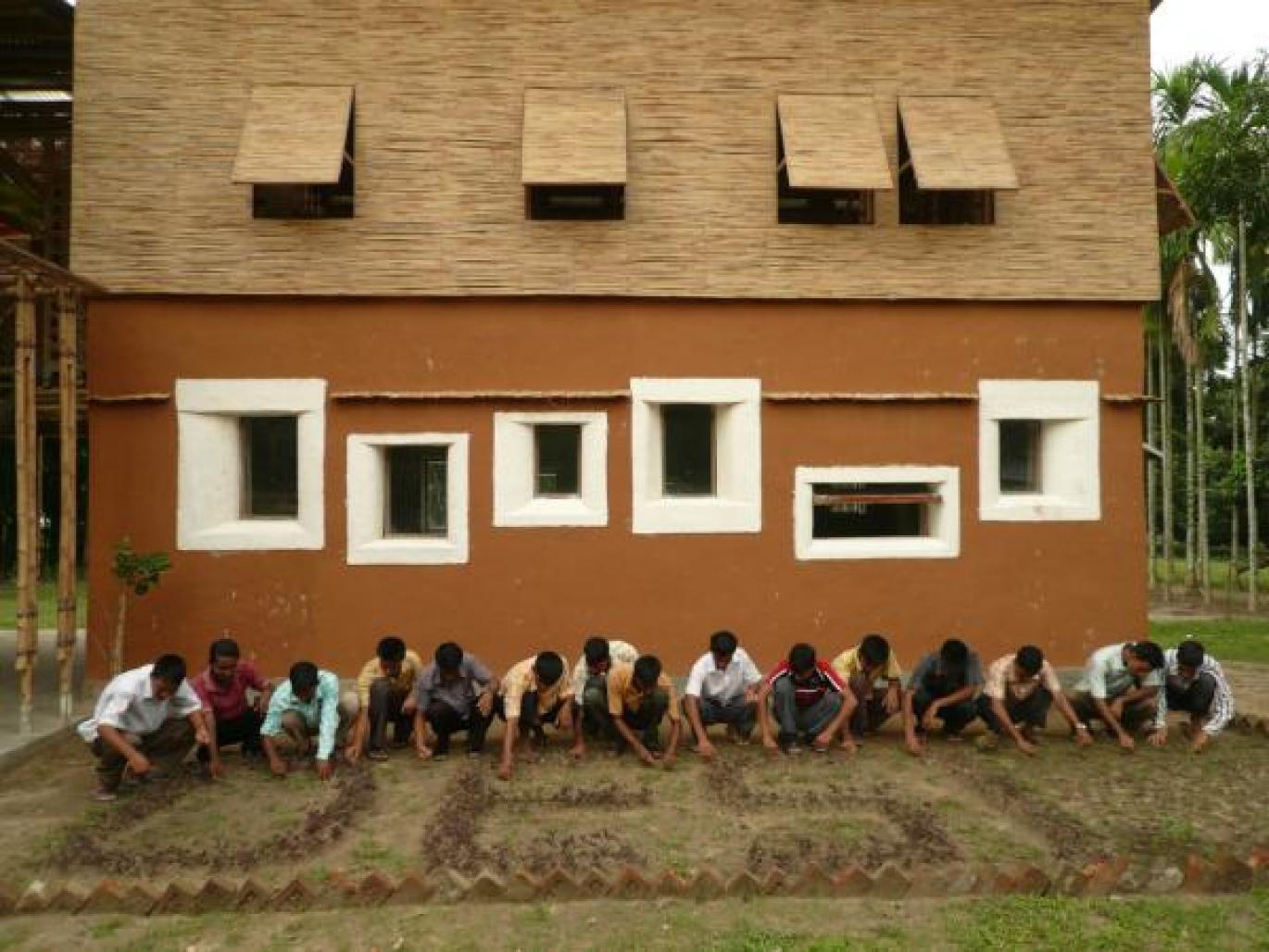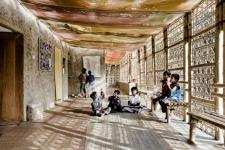DESI is an attempt to find adequate solutions for an enhanced rural living that also shows the next level of building development.
The crucial moment in development is the step from low-income to middle class houses. The trend in Bangladesh shows it very clear – it is a shift in the building materials – from earth to fired brick or concrete. What the DESI building wants to show is that the difference between a basic and developed architecture lies in an increased input on craftsmanship, on technical know-how, creativity and a profound planning. This shows a very fair way of development that doesn’t create a gap between poor and rich nor old and modern. It is a motivation for enhancing craftsmanship, a support on local markets and an increasing cultural pride and sense of identity.
The DESI building is a new interpretation of the traditional Bangladeshi homestead. Typically in rural Bangladesh all of the various household functions - eating, sleeping, washing, etc. - are performed in separate structures that are built around a central courtyard. The DESI building, however, attempts to incorporate all of the functions of working and living into a single structure. The design is geared toward a lifestyle that is no longer linked with agriculture, but still linked to the rural context and culture. „It is very difficult to find educated persons who like to live in rural areas.“ {Paul Tigga, Executive director of Dipshikha}
DESI {Dipshikha Electrical Skill Improvement} is a vocational school for electrical training. The DESI building houses two classrooms, two offices, and two residences for the school instructors. There is a separate bathroom with two showers and two toilets for the teachers and a bathroom facility with toilets and sinks on the ground floor for the students.
Solar panels produce 100% of the building’s energy needs. A solar thermal heating system provides warm water. Solar panels also directly power a motor which pumps water from a well into the water tank. The toilets have their own two-chamber septic tank. This is the first time that sanitary units have been built into earth houses in Bangladesh, proving that mud and bamboo are flexible enough to accommodate modern lifestyle requirements.
The building is a perfect balance of high tech and low tech – very basic building methods are combined with modern, alternative energy power systems. Because the building is passively heated and cooled and optimizes natural light and ventilation, the relatively small solar panel and battery system provides all of the power the building requires.
Client: DIPSHIKHA, funded by Shanti, Structural engineering and technical supervision: Stefan Neumann, Solar installations and electrical concept: Jakob Schaub, Energy concept: Oskar Pankratz Advisor in earthen structures: Martin Rauch, Supervision of site: Stefan Neumann, Montu Ram Saw, Shoeb Al Rahe
2007
2008





.jpg)
.jpg)


.jpg)
